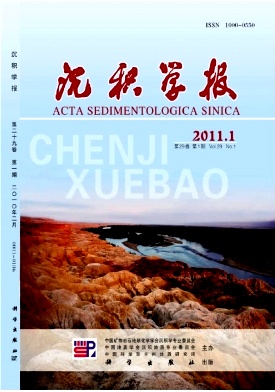Sedimentary Features and Tectonic Environments of Silurian VolcanicRelated Carbonates in the North Daba Mountains
- Received Date: 1900-01-01
- Rev Recd Date: 1900-01-01
- Publish Date: 2011-02-10
-
Key words:
- biohermal limestone /
- bioclastic limestone /
- volcanosedimentation /
- oceanic island/sea Mountain /
- Silurian /
- North Daba Mountains
Abstract: Bioclastic and biohermal limestones, which are widely exposed in the orogenic belt, should be formed in different tectonic environments. Identifying their composition and fossil occurrence state is of fundamental importance for palaeogeographical reconstructions and orogenic evolution. Carbonate rocks, which are closely related to alkaline basalts with high TiO2 abundance, have been regarded as platform deposits of passive margin in the North Daba Mountains. They are composed of biohermal limestone, bioclastic limestone, calcarenite, and marlstone with abundant bioclastic and volcanic fragments. Thinner pyroclastic interlayers generally occur in the calcarenite and bioclastic limestone assemblages. Graded, parallel, wavy beddings and slump structure are very common in the outcrops. Bioclastic limestone, tuffaceous sandstone and mudstone generally show rhythmic features. Volcanic fragments within the bioclastic limestone are mainly composed of 0.5 to 3 mm angularsubangular basalt and tuff, indicating proximal sedimentary deposits. Volcanic fragments of the biohermal limestone are dominated by 1~2.5 cm angularsubangular basalts and 0.51 mm subrounded basalt fragments are also abundant in the sandstone beds which are interbeded within the biochermal limestone beds. Two types of volcanic fragments occur in the calcarenite: basalt and pyroxene. They are angular and subangular, and pyroxene fragments range from 1 to 2 mm in size. Abundant pyrite grains in the calcarenite show normal graded structures because of their size variation. Breccia limestone is composed of calcarenite, biohermal and bioclastic limestones, and basalt fragments only exist in the breccia biohermal limestone. Fossil clasts/fragments in the calcarenite and bioclastic limestone are mainly subrounded, suggesting that these fossil fragments had ever been transported for a long distance. Additionally, the growth orientation and distribution of fossils in the biochermal limestone are generally parallel to the sandstone interbeds, and slump structures are very common in this lithology. These characters coevally suggest that these carbonate assemblages are sincerely associated with the underlying basalts with alkaline geochemical affinity spatially; they have the similar framework and constitute characters of modern oceanic island/sea mountain. The carbonate generally developed around the underlying basalts and deposited in the deepwater and slope environments. Moreover, fossils within these carbonates should be derived from other place and were modified during transport, indicating the ages of these fossils should be earlier to the age of carbonate rocks.
| Citation: | YAN Zhen. Sedimentary Features and Tectonic Environments of Silurian VolcanicRelated Carbonates in the North Daba Mountains[J]. Acta Sedimentologica Sinica, 2011, 29(1): 31-40. |






 DownLoad:
DownLoad: